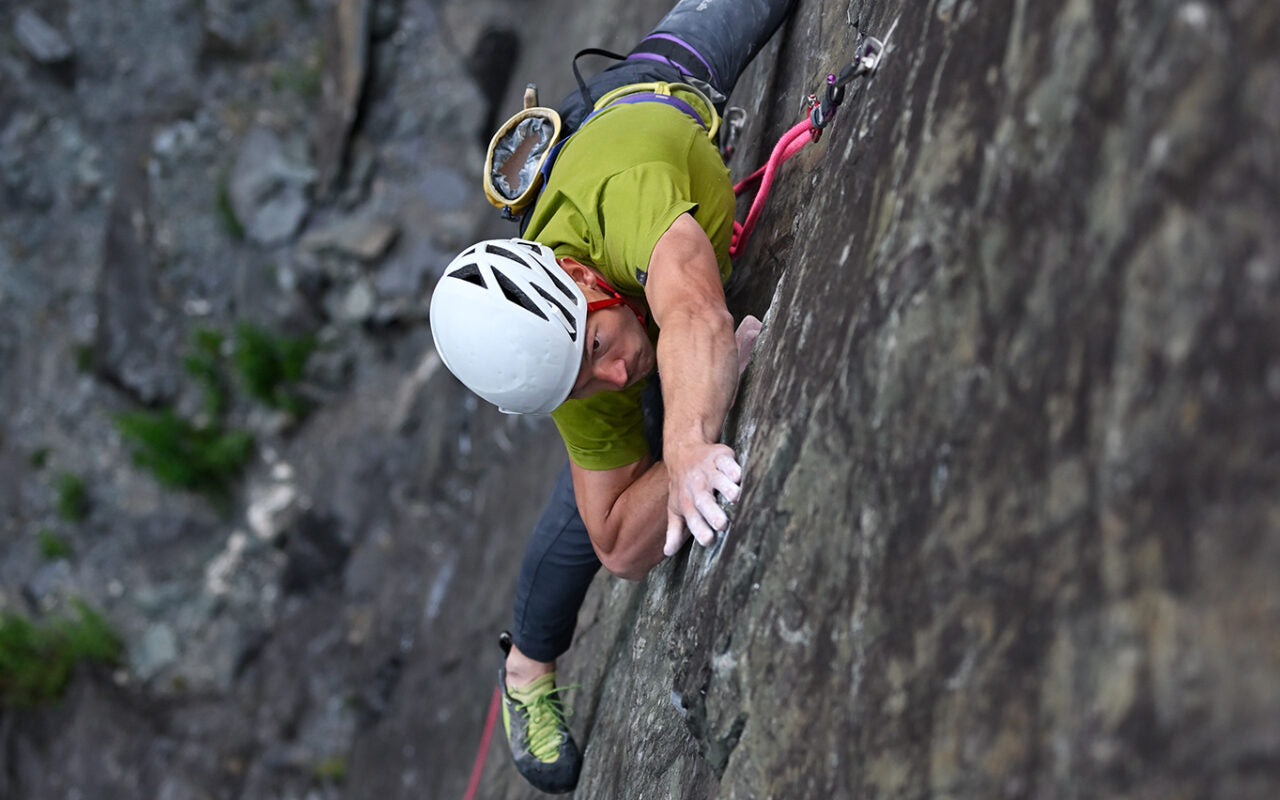The Meltdown at Twll Mawr, in Wales is known as the UK’s hardest slab climb – first put up by Johnny Dawes in 1985 and only a handful of climbers have managed it since.
Last month SCARPA Athlete Angus Kille was determined to add his name to that select few. Read on for Angus’ attempt at The Meltdown.
As much as I love climbing slabs, I never felt I had the finesse or the attention to really master them. Slab climbing always seemed like a bit of a dark art – you need the kind of balance, precision and footwork that never came naturally to me. The Meltdown epitomised these elusive qualities for me, but I knew that they were also things I could theoretically learn if I really put the time and attention into it. Of course, this meant I had no excuse for not giving The Meltdown a go.
Naturally, margins are razor thin on this route. The wall is smooth and curiously rounded in places, giving the impression that the slab has actually melted (hence the name). The holds are mostly small and usually point the wrong way, and of course slate is notoriously low-friction. A few degrees in rotation of my foot, or the slightest excess tension in my legs, could be the difference between climbing and falling. To add to this, The Meltdown is also very near the limit of what I can climb.


All of this made The Meltdown an excellent opportunity to learn the real subtleties of rock climbing. I found that moves were noticeably easier if it was two degrees cooler, I couldn’t hold on if my skin was too thick or too thin, and (of course) I needed to pay a lot of attention to my feet. It took me three sessions just to understand what I needed from my footwear. I needed stiff shoes with a tight and comfortable fit and very high-quality rubber. That meant going down a half-size, taking care of my edges and treating my shoes like high-precision tools.
I learnt to tidy up the nicks and cuts that sharp slate holds had gouged from my shoe rubber. At the bottom of the route I would do routine surgery on these wounds with a razor blade. A soft wire brush would stop the rubber getting too slick. I kept my shoes in a clean bag so they didn’t absorb chalk or dust in between sessions. I could sand down rubber to keep my edges in shape so I didn’t lose a precious millimetre on those little footholds. Conveniently, these tricks also made my shoes last much much longer.
Resoling was a game changer. A shoe doesn’t perform at its best straight out of the box – you need to break it in and get a feel for it. By the time you’ve broken them in, the edges are unlikely to be at their best, especially if you’ve been climbing on slate. Resoling is a chance to have your cake and eat it, but you’ve got to find a good resoler and don’t wait until your shoes are completely dead.


By the time I attempted The Meltdown on redpoint, SCARPA had released its long-awaited stiff shoe, the Generator. I was nervous to try anything other than my trusted Maestros, which knew the route as well as I did, but I took my Generators out of the box and straight through the first crux of The Meltdown on one of my first lead attempts. I could now alternate my shoes while the other pair were being resoled.
As my springtime project ran into early summer, the challenge began to run away from me: just as I was getting close, the route got warmer, and hence slippier, and I had to fine-tune those intricacies even more. I built breaths into my sequence to help me focus, climbed only in the late evening and dialled-in the subtle angles at which my feet needed to meet each foothold.


In early June I found myself at the last quickdraw of the route for the sixth time, already past the top crux which was the hardest move for me. Determined not to fall on what was my last chance to climb the route in warm but not boiling conditions, I pulled extra hard on the hold I kept slipping from. My success on this move was accompanied by an audible pop as a tendon pulley tore in my little finger. Knowing that I really had blown my chance at another attempt, I continued through the five-metre runout that ends the route.
As I clipped the chains my scream echoed around Twll Mawr. I had studied The Meltdown and all of its subtleties over twenty-five sessions – it had taken all of my attention to detail and a very focussed performance to make it, and it cost me a finger pulley too. In the end it was my perfectly resoled Maestros that did the job. What really made the ending so satisfying was that I had never learnt so much from one rock climb – and I might even be able to call myself a slab climber now.

Keep up with the latest from our athletes on Facebook or Instagram.



